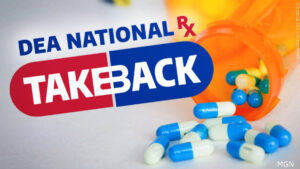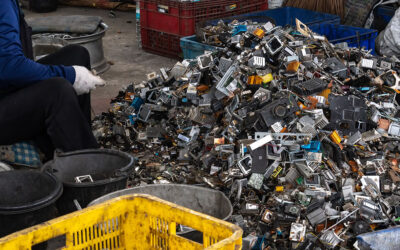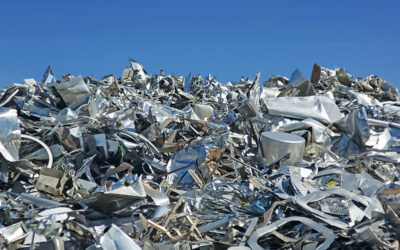By Julie McNabb, Writer/Editor ASSET 2.0
How Pharmaceutical Pollution Is Making Us Sick
Like most of us, you probably have a medicine cabinet stocked with prescription and over-the-counter drugs. But what do you do with them when they have expired – or no longer needed? Do you participate in a ‘take back’ program, flush them down the john or toss them into the trash? A study of an urban housing authority shows that nearly 80% of participants never received information about proper medication disposal methods, and over 50% were unaware that unsafe medication disposal could harm both people and the environment. Moreover, half of the respondents stated that they flushed or put their unused meds in the trash. The result is an accumulation of pharmaceutical drugs such as opioids and antidepressants in our water and soil.
Hopefully, after reading this article, you will more fully understand how pharmaceutical waste is polluting our environment and how you can be an advocate for the proper disposal of unwanted medications.
The evolution of pharmaceutical waste
Since the 1940s, pharmaceutical products have become widely available. Over the next 20 years, more concern over patient safety arose as increasingly high levels of adverse drug reactions were reported. In 1963, the World Health Assembly passed a resolution to collect data on the adverse effects of drugs both during development and after entering the market. The next two decades brought the discovery that pharmaceuticals had seeped into the environment causing harm to humans, animals and the environment. And it now had a name, pharmaceutical pollution defined as (mainly) an aquatic pollution (groundwater, rivers, lakes, and oceans) contaminated via wastewater discharge.
So how do drugs get into the environment in the first place?
There are three main pathways:
- Humans/animals: Excretion plus people tossing unused/expired meds in the garbage or flushing down the toilet)
- Wastewater discharged from pharmaceutical manufacturing facilities
- Healthcare settings dumping unused/expired drugs in the waste bin
Adding to the evolving problem is the fact that medications contain active pharmaceutical ingredients (APIs) that are designed to be stable – meaning some are nondegradable or degrade slowly in the environment. Even for the pharmaceuticals that can be transformed or removed by natural processes, continuous emissions from various sources maintain their presence in the environment.
Humans/animals
From the consumer end, drugs can be excreted, flushed down the toilet or tossed in the garbage. They end up in sewage treatment plants that are generally not designed to remove such pollutants from wastewater.
In this way, a number of pharmaceuticals as well as components produced by their deterioration find their way into lakes and rivers from wastewater treatment plants (WWTPs). And when some drugs enter the water supply…they are there to stay. Where else do they end up? In crop fields and livestock farms. They can even leech out from septic systems and landfills.
The bigger concern is when people flush medicines down the toilet, which introduces drugs into the water supply in their full concentration. Ironically, the FDA has been recommending flushing drugs that can be abused or lethal in one dose, such as OxyContin, Percocet, and morphine—but that means they end up in our drinking water.
Livestock
Antibiotics in livestock have been widely used to promote growth and prevent diseases. However, the overuse of antibiotics in animal feed has caused serious environmental and health risks, particularly the wide uptick of antimicrobial resistance (AMR) or ‘superbugs’ (more on that later). This could ultimately endanger human and animal health, food safety, ecosystems and the sustainable future development of animal protein production.
Medical microbiologist Matthew Upton from the UK’s University of Plymouth stated, “Although the situation is improving in some parts of the world, vast amounts of antimicrobials are used to treat and prevent infections in food animals. Improved husbandry and other infection prevention and control methods like vaccination should be used to reduce infections and the need for antimicrobial use, which in turn limits environmental pollution with antimicrobials, antimicrobial residues and resistant microbes.”
And antibiotics aren’t the only drugs found in this particular waste stream, acetaminophen, caffeine, cotinine, diphenhydramine, and carbamazepine were also discovered.
Pharmaceutical manufacturing
Pharmaceutical plants are often incapable of filtering out all the chemical compounds used in their manufacturing process causing them to seep into the surrounding freshwater systems and eventually into the oceans, lakes, streams, and rivers.
In a U.S. Geological Survey study, scientists found that pharmaceutical manufacturing facilities can be a significant source of pollution. Effluents (liquid waste, sewage or industrial outfalls that flows directly into surface waters either untreated or after being treated at a facility) from two wastewater treatment plants (WWTPS) that receive discharge from pharmaceutical manufacturing facilities (PMFs) had 10 to 1,000 times higher concentrations of pharmaceuticals than effluents from 24 WWTPs across the nation that do not receive PMF discharge. The release waters from these two WWTPs were discharged to streams where the measured pharmaceuticals were traced downstream, and as far as 19 miles from one plant’s outfall.
Healthcare settings
In the past many healthcare facilities would dump expired medication in a dumpster or down the drain. But state and federal regulations have now been established to prohibit such practices. Most recently, the EPA’s “Management Standards for Hazardous Waste Pharmaceuticals and Amendment to the P075 Listing for Nicotine” provides cost-saving, streamlined standards for handling hazardous waste pharmaceuticals to better fit the operations of the healthcare sector.
Most importantly, this final rule reduces the amount of hazardous waste pharmaceuticals from entering waterways by 1,644 to 2,300 tons on an annual basis by prohibiting all facilities from ‘sewering’ them. This also applies to reverse distributors as well. (A company which receives pharmaceuticals from a wholesale or retail seller or a healthcare facility for the purpose of returning unwanted, unusable, or outdated pharmaceuticals to the manufacturer or to another entity that can legitimately reuse the medicine.)

Photo credit: Children’s Health Defense Africa Chapter
So, what’s in city water?
A survey conducted by the Centers for Disease Control and Prevention (CDC) reported that 48% of Americans used at least one prescription drug in the past month. That translates into about 150 million Americans using prescription drugs at any given time. And the unused drugs could be counted in the potential millions of pounds of waste contaminating the water.
The Associated Press spearheaded an investigation that revealed municipal water supplies in several areas were contaminated with antibiotics, hormones from birth control pills, antidepressants and medications for diabetes, blood pressure and seizures. In the southeast alone, a study found an average of six pharmaceuticals which also included medication for diabetes, seizures, and a local anesthetic at detectable levels in 59 streams.
So, what’s in the world’s water?
A recent study came out in in the monthly peer-reviewed scientific journal, “Environmental Toxicology and Chemistry.” It uncovered approximately 43.5% of the 1,052 river locations across 104 countries had alarming concentrations of pharmaceutical elements. Twenty-three pharmaceutical ingredients occurred at levels exceeding ‘safe’ concentrations, including substances from the antidepressant, antimicrobial, antihistamine, benzodiazepine and painkiller drug classes as well as others.
And the environmental and health impact?
As mentioned previously, antimicrobial resistance (AMR) from antibiotic ‘drugged’ water pollution is a major health challenge. But due to their prescription overuse, efficacy is waning. When introduced into waterways, they provide a perfect breeding environment for antibiotic-resistant bacteria aka ‘superbugs’.
And the impact on fauna, flora – and partygoers?
Harmful influences on wildlife can occur at low concentrations—and have different effects than those on people. Amphetamines change the timing of aquatic insect development. Antidepressants cause shore crabs to exhibit “risky behavior,” and birth control pills caused male fish to produce a female hormone.
Recreational drugs? A 2021 study found that cocaine being excreted at a UK festival caused muscle tissue and kidney damage in eels found in a nearby lake. The impact of this isolated exposure lasted for approximately 10 days.
Plants are also affected by pharmaceuticals. Dr. Anne Jungblut, a researcher on aquatic plants, stated that antibiotics can inhibit photosynthesis and can kill algae or prohibit its growth.

What you can do
The EPA encourages the public to take advantage of pharmaceutical take-back collection programs for prescriptions and over-the-counter drugs. They use eco-friendly disposal methods and provide easy and accessible collection sites, including many chain retail pharmacies. The Drug Enforcement Administration also hosts National Prescription Take Back Day during the last Saturday in April and October. They also sponsor collection sites throughout the country and have a site locator tool at https://www.dea.gov/takebackday.
What’s in your medicine cabinet?
Sources:
www.nhm.ac.uk/discover/news/2022.com, “Drug Pollution Threatening Water Quality Worlds’ Rivers,” July 6, 2022
www.forbes.com,”There’s Active Drugs in Our Drinking Water What’s Being Done?” July 19, 2022
www.theatlantic.com, “Pharmaceutical Pollution,” May 2019
www.center4research.org,”Pill Disposal,” 2023
www.epa.gov, “Final Rule Management Standards Hazardous Waste Pharmaceuticals and Amendment-p075,” Mar. 21, 2023
www.theguardian.com, “Farming Pharmaceutical and Health Pollution Fueling Rise in Superbugs UN-Warns,” Feb. 7, 2023
www.usgs.gov/special-topics/water, “Science/School/Pharmaceuticals/Water,” June 6, 2018
www.getsmartaboutdrugs.gov, “National Take Back Day,” Mar. 25, 2022
www.onlinelibrary.wiley.com/doi/full/10.1111/reel.12422
www.unep.org/explore-topics/chemicals-waste/what-we-do/emerging-issues/, “Environmentally Persistent Pharmaceutical,” March 2020
www.weforum.org, “Pharmaceutical Pollution Health Drugs Rivers,” Feb. 2022



